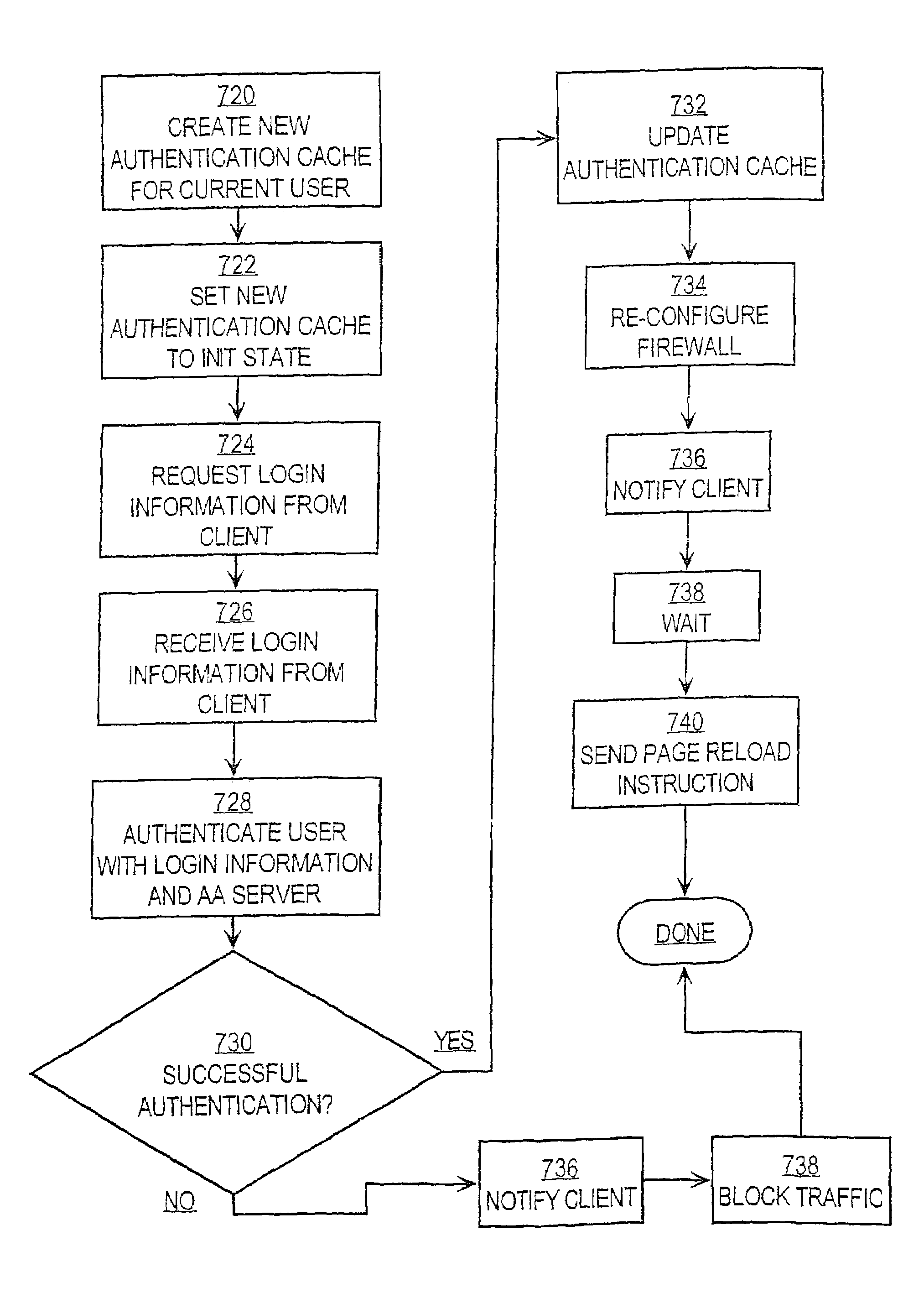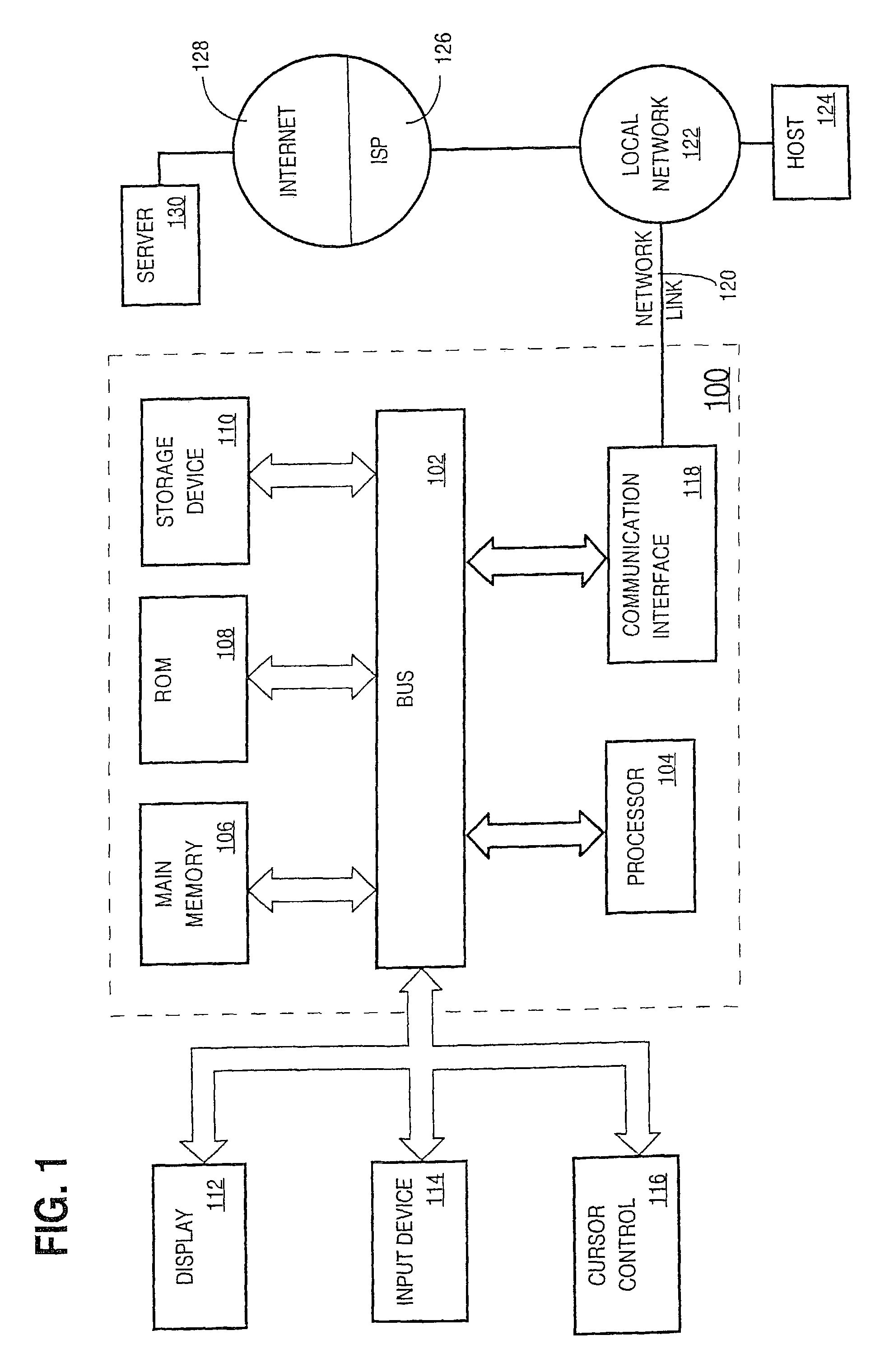Local authentication of a client at a network device
a network server and local authentication technology, applied in the field of computer network management, can solve problems such as untrusted traffic, network security problems, and employees from accessing certain web sites, and achieve the effect of avoiding untrusted traffic, avoiding untrusted traffic, and avoiding untrusted traffi
- Summary
- Abstract
- Description
- Claims
- Application Information
AI Technical Summary
Benefits of technology
Problems solved by technology
Method used
Image
Examples
Embodiment Construction
[0044]A method and apparatus for authentication and authorization proxy mechanisms for firewalls that protect networks is described. In the following description, for the purposes of explanation, numerous specific details are set forth in order to provide a thorough understanding of the present invention. It will be apparent, however, to one skilled in the art that the present invention may be practiced without these specific details. In other instances, well-known structures and devices are shown in block diagram form in order to avoid unnecessarily obscuring the present invention.
Operational Context
[0045]The present invention may be implemented using various client protocols such as Telnet, File Transfer Protocol (FTP), or HyperText Transfer Protocol (HTTP). For purposes of illustration, the invention is described in the context of an HTTP client protocol.
[0046]In one embodiment, a user of a client that is part of a local area network (“LAN”) attempts to remotely access a server (...
PUM
 Login to View More
Login to View More Abstract
Description
Claims
Application Information
 Login to View More
Login to View More - R&D
- Intellectual Property
- Life Sciences
- Materials
- Tech Scout
- Unparalleled Data Quality
- Higher Quality Content
- 60% Fewer Hallucinations
Browse by: Latest US Patents, China's latest patents, Technical Efficacy Thesaurus, Application Domain, Technology Topic, Popular Technical Reports.
© 2025 PatSnap. All rights reserved.Legal|Privacy policy|Modern Slavery Act Transparency Statement|Sitemap|About US| Contact US: help@patsnap.com



